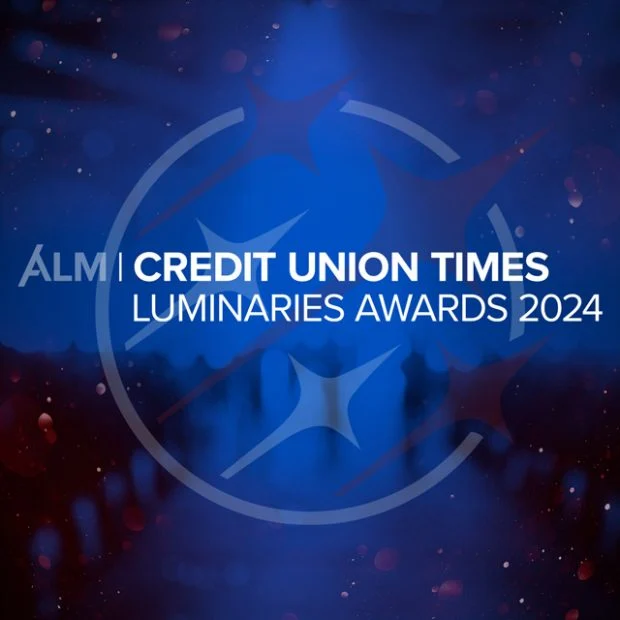HaWith record snowfall and subzero temperatures blanketing large portions of the United States this winter, many credit unions were hit hard with higher energy costs.
Natural gas prices climbed 45% in the past year, according to a Feb. 17 Wall Street Journal article. Despite skyrocketing fuel costs, some institutions managed to keep gigantic utility bills at bay by taking a proactive approach, improving energy efficiency and growing greener branches.
Many institutions are already embracing sustainability. Within the past year, a growing number of credit unions have unveiled buildings with Leadership in Energy and Environmental Design certification from the U.S. Green Building Council.
Recommended For You
Last spring, the $55 billion Navy Federal Credit Union in Vienna, Va., said it opened a LEED Silver-certified branch at Marine Corps Air Station Miramar. The 3,500 square-foot branch has solar panels, energy efficient lighting and HVAC systems with programmable temperature controls.
 One of the industry's latest green buildings (pictured at left) comes from the $619 million Vermont State Employees Credit Union, which opened in February. By incorporating green features such as an energy efficient roof system, the Montpelier, Vt.-based VSECU estimate energy consumption for the new branch will be 39% less than a similar-sized building, said Laurie Fielder, program director for the credit union's VGreen program, which provides energy efficient financing for members.
One of the industry's latest green buildings (pictured at left) comes from the $619 million Vermont State Employees Credit Union, which opened in February. By incorporating green features such as an energy efficient roof system, the Montpelier, Vt.-based VSECU estimate energy consumption for the new branch will be 39% less than a similar-sized building, said Laurie Fielder, program director for the credit union's VGreen program, which provides energy efficient financing for members.
"With the long, brutal winter that has hit Vermont, along with many other areas of the U.S., we're fortunate to have the support of the VSECU board and management to implement efficiency investments and initiatives for the benefit of the credit union and our members," said Fielder.
Plans are in place for VSECU to seek Energy STAR certification for its new St. Johnsbury, Vt.-based branch and for another branch in Waterbury that was renovated to be more efficient after sustaining damage from Hurricane Irene in 2011.
"While we are a growing organization, we recognize that building more branches uses more resources; so we build all new branches to meet high efficiency standards," Fielder added.
Opened in December 2011, VSECU's Rutland branch was Vermont's first financial institution building to achieve LEED Gold certification, she said.
The credit union has also used climate control technology to improve heating and cooling efficiency in four branches, Fielder said.
"VSECU has an environmental mission that we strive to uphold in our everyday operations and we are always thinking ahead to the steps we can take to preserve our natural environment and conserve energy resources in all the ways we conduct business," Fielder explained. "We've invested in energy efficiency and we experience the many benefits such as improved comfort and reduced energy usage while we save money."
One of the easiest methods for credit unions to track and assess energy use is with the Energy Star Portfolio Manager, according to a new Filene Research Institute report, "Improving Social and Environmental Sustainability: A Credit Union Assessment and Comparison."
By using the free Energy Star tool, credit unions can monitor an entire portfolio of buildings, identify underperforming buildings, verify efficiency improvements and receive recognition from the Environmental Protection Agency for superior energy performance.
The Filene report also recommends that credit unions consider the benefits of installing Energy Star appliances, automatic sleep modes, after-hour timers, LED bulbs, occupancy sensors, daylight dimmers, task lighting, programmable thermostats, timers, occupancy sensors, shade sun- exposed walls and double- paned windows.
The $2.3 billion Service Credit Union said its new headquarters in Portsmouth, N.H., is certified as LEED Gold and has a 98 Energy Star Rating, meaning that it uses less energy than 98% of similar facilities.
Just like homeowners, credit unions can save significantly on energy costs by making wise investments in efficiency, said Melissa Malkin-Weber, sustainability director for the $646 million Self-Help Credit Union in & Ventures Fund, both based in Durham, N.C.
"With rising energy prices and the environmental impact of using natural resources, we've been taking a broader, more systemic approach and looking for the best opportunities to conserve," said Malkin-Weber.
In 2012, Self-Help implemented green facility initiatives that it predicts will save approximately $92,000 each year, she pointed out.
One key to getting the most bang for the buck with energy efficiency initiatives is to work closely with contractors to pinpoint upgrades that benefit the long-term bottom line, said Malkin-Weber.
For instance, when Self-Help needed to replace the chiller unit on the roof of its headquarters, the credit union requested three price quotes from the contractor.
"Instead of just going with the least expensive replacement, we told the contractor to provide quotes for the good, better and best options, along with finding out what types of rebates we would qualify for from Duke Energy," said Malkin-Weber. "As a result, we now have a more efficient unit with about a three-year payback."
Self-Help also requested three price quotes to replace 46 lights in the headquarters' training room. The credit union selected LED lights because they kept the room cooler on warm days, conserved additional energy and resulted again in a three-year payback.
"We do a lot of analysis about the cost benefit before deciding on any energy efficiency projects," said Malkin-Weber. "That strategic approach is paying off with lower energy costs and less environmental impact."
© 2025 ALM Global, LLC, All Rights Reserved. Request academic re-use from www.copyright.com. All other uses, submit a request to [email protected]. For more information visit Asset & Logo Licensing.







